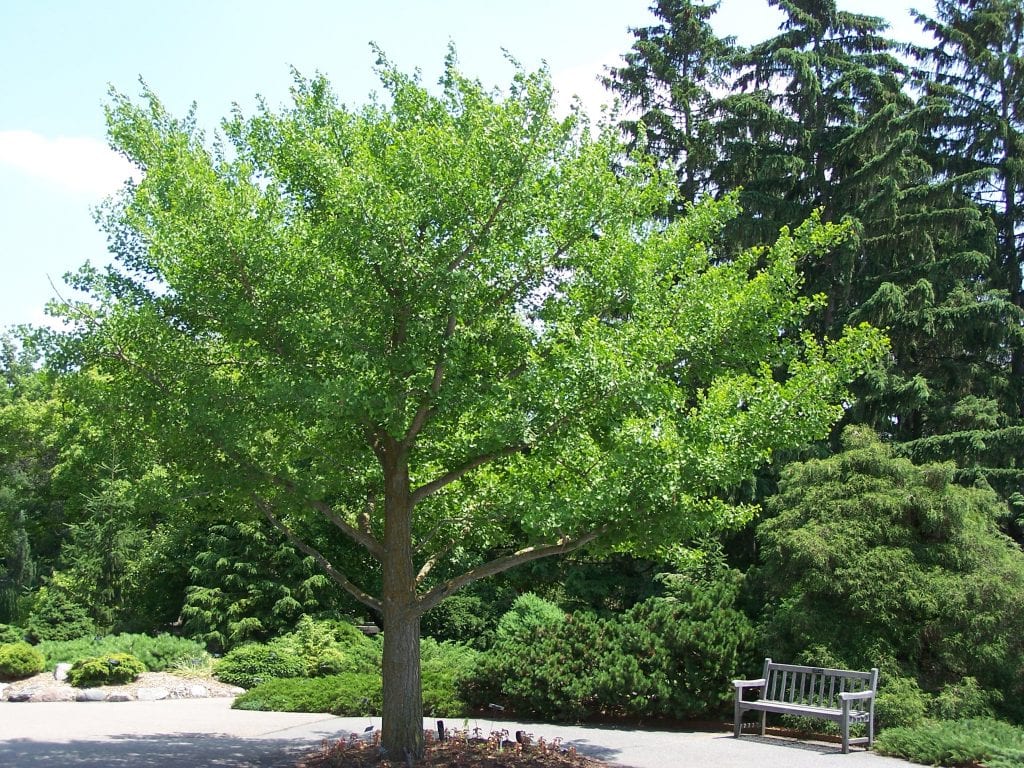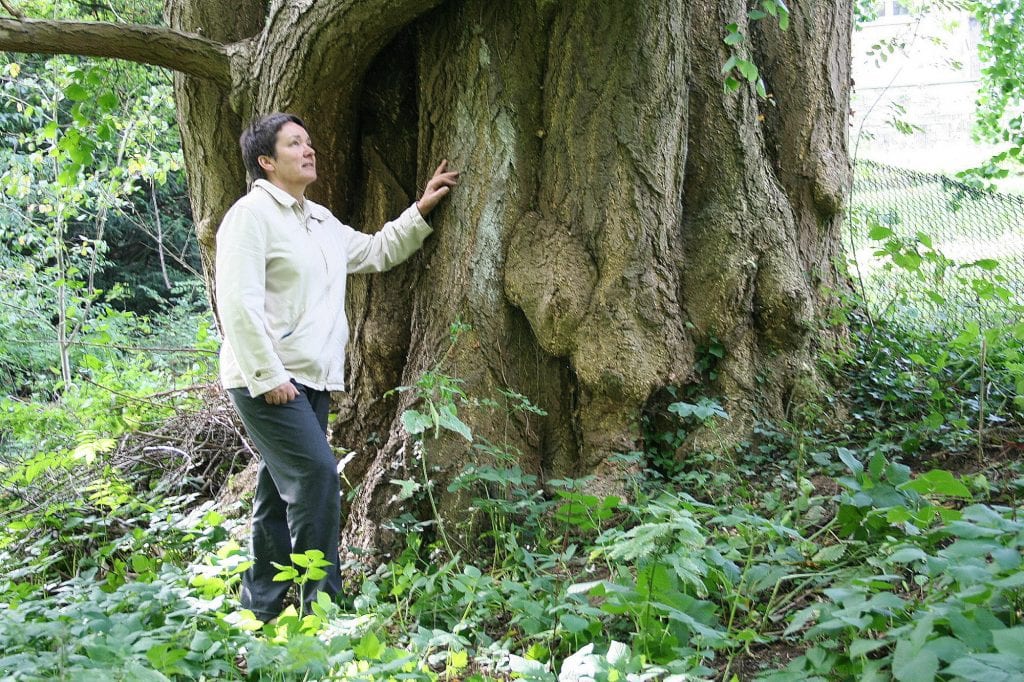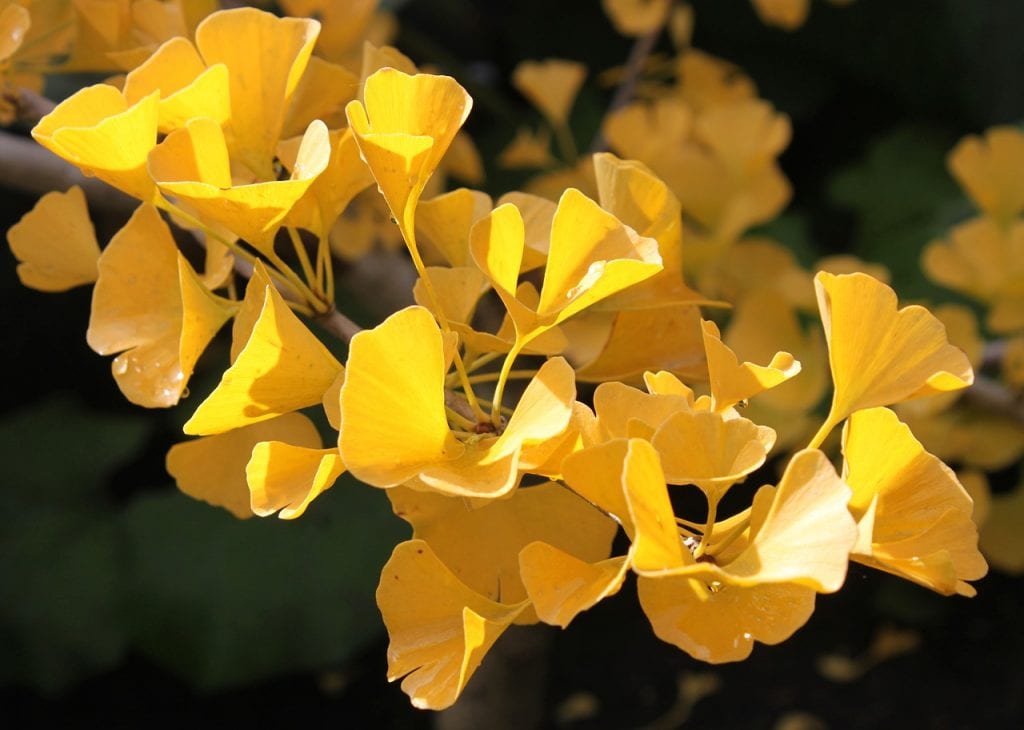
It is a tree belonging to one of the oldest botanical families in the world: the Ginkgoaceae, which began its evolution more than 200 million years ago, in the late Triassic. The only representative that remains is the Ginkgo, a genus of which only one species has remained: the Ginkgo biloba, known as the Tree of the pagodas.
Although it is a tree, it is not like the ones we know. Being of a gymnospermIt does not produce flowers like maples or ash trees do. Do we know one of the most extraordinary plants in the world better?
Ginkgo biloba characteristics

This is a tree believed to be native to China, where it can grow up to 30 meters tall with a trunk thickness of 7m. The leaves are fan-shaped, green in spring and summer, and yellow in fall.
It is a dioecious species, that is, there are female flowers and male flowers in different specimens. In this way, It is important to say that the fruits produced by the females give off a very unpleasant smell when they ripen, so this has to be taken into account if you want to put a specimen in the gardens.
What care do you need?

If you want to have a Ginkgo in the garden, follow our advice to make it grow healthy:
- Location: outdoors, in full sun or in semi-shade.
- Irrigation: frequent in summer, somewhat scarcer the rest of the year. Water 2-3 times a week in the hottest months, and 1-2 / week the rest of the year.
- Subscriber: highly recommended to fertilize in spring and summer with organic fertilizers, such as guano, following the instructions specified on the package.
- Pruning: It's not necesary.
- Land: well drained and slightly acidic (pH 5-6).
- Multiplication: by seeds, which have to be stratified for three months in the refrigerator, or by cuttings from the previous year in autumn.
- Plagues and diseases: It's very tough. Mealybugs can affect you if the environment is very dry and warm, but they are easily removed with a swab from the ears soaked in water or paraffin oil.
- Rusticity: withstands temperatures between 35ºC maximum and -30ºC minimum.
What do you think? 🙂
Inform yourself before giving wrong information, the female tree bears fruits, so if it produces flowers, the trunk of this can reach a much larger diameter than indicated, in addition to seeds, they can also reproduce by cuttings, and can withstand temperatures of up to -30 degrees.
Hello Jorge.
Thanks for the data. It's already changed.
Greetings and have a nice weekend.
GOOD AND TIMELY INFORMATION. DO YOU KNOW WHO OR WHO GROWS THE TREE IN COLOMBIA? FROM WHICH PLACE COULD CUTS BE IMPORTED? OR SEEDS FOR SCALE REPRODUCTION?
IN WHICH COUNTRIES ARE THERE CROPS WITH FOLIAGE AND SEED PROCESSING?
Hi Jose Duran.
No, sorry 🙁. We are in Spain.
A greeting.
Good afternoon,
Thank you very much for the fantastic job you do.
Two years ago I sowed some GB seeds, they came out and grew without problem, but this spring I have seen that there are two specimens (also one is the most beautiful of all the ones I have) that have come out a bit "sad" and they are not growing well, their leaves have fallen and some just start to come out they turn black and die. What could be happening ???
All the best
Hi Guillermo.
Have you ever treated them to prevent yeast infections? If you have not done so, I highly recommend doing it because trees, from when they are seeds until they are 2-3 years old, are very vulnerable to these microorganisms.
You can use powdered sulfur. You spread all over the plant and all over the surface of the earth, and if you want also through the trunk. Repeat after 15 days.
Hopefully it improves.
I would like to insert a photo Ginkgo biloba, Pagoda tree Ginkgo_biloba,
in a story I want to edit. (Sorry my English is bad)
I can? What can be the conditions?
Best wishes,
rossend mango
rmangotc@gmail.com, from Terrassa (Barcelona)
Hola!
Sorry, I did not understand you well. Do you mean the images?
Here you are free to use: https://wordpress.org/openverse/search/?q=ginkgo%20biloba
regards